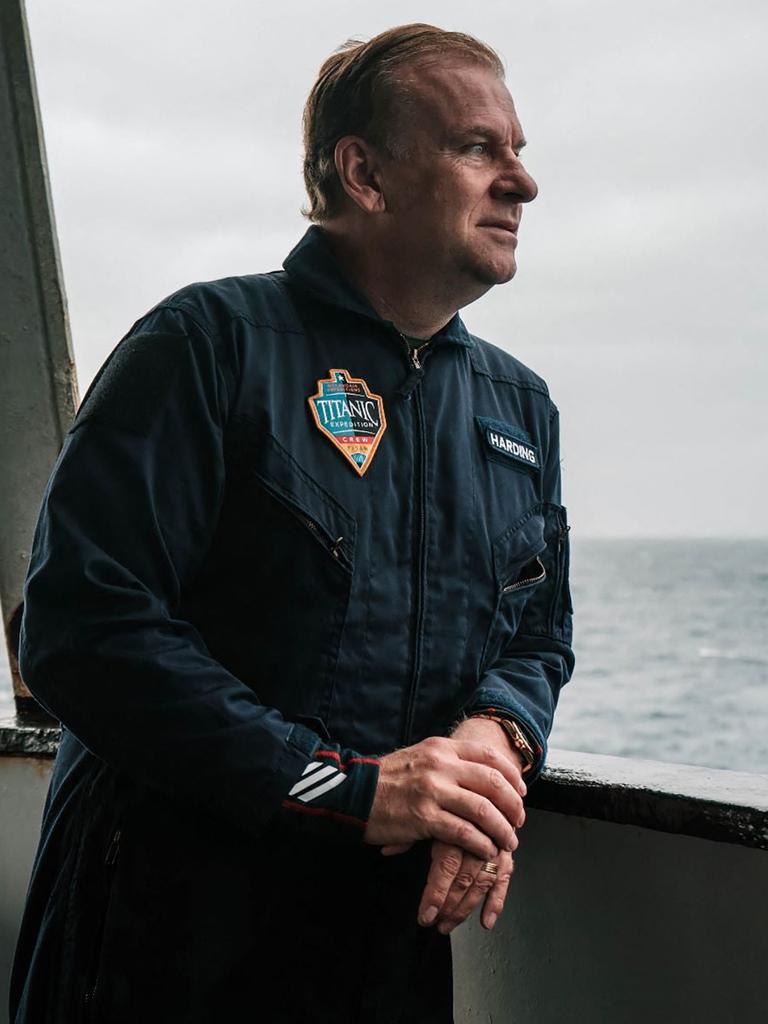’Never knew what happened’: What really caused the Titan sub disaster
As the families of those aboard the doomed Titan sub received the worst news possible, attention is turning to what really caused the disaster.

It would likely have been over within milliseconds.
The submersible Titan suffered a catastrophic failure of its pressure hull.
When it let go, the ocean would have punched its way in, compressing the air so much and so fast that it could spontaneously ignite. But only for a mere moment.
At great depths, the kinetic force of the surrounding water can collapse air bubbles to the point where they dissolve.
The resulting shockwave is immense, and such an undersea disturbance was detected Sunday evening by US Navy listening networks intended to monitor the movements of military submarines.
“It would have been immediate, and probably so fast the occupants never knew what happened,” North Carolina Campbell University maritime historian Dr Sal Mercogliano told News Corp.


“The sudden compression would not leave much – if any – remains to be recovered in that environment.”
And only solid objects – such as the titanium cones that caped the cylindrical carbon-fibre hull – would have survived in any recognisable form.
“I don’t think people can appreciate the amazing energy involved in the destructive process of an implosion,” oceanographer Bob Ballard – who discovered the wreck of the Titanic in 1985 – told US media this morning.
“It just takes out and literally shreds everything. It’s extremely powerful.”
Deep sea expert Paul Hankin told a US Coast Guard news conference early this morning that “five different major pieces of debris” had been identified on the sea floor about 500m away from the wreck of the RMS Titanic.
“We’ve continued to map the debris field,” Mr Hankin said.
“We’ll do the best we can to fully map it out.”
Deep sea stress
Determining what went wrong with the Titan submersible will be a herculean task. As many pieces as possible must be carefully raised 3800m from the sea floor. And only careful forensic analysis can identify what triggered the pressure hull collapse.
So far, dive experts associated with the rescue attempt have revealed the components located include the Titan’s landing frame (used to dock with the ship and sit on the ocean floor) and the rear titanium pressure cone.
The landing frame could have been jettisoned to reduce the craft’s weight in an emergency. But not the solid end cap.
“A catastrophic collapse of the vessel would have basically blown those parts off the submersible,” says Dr Mercogliano.
The 6.7m craft – like any deep sea vessel – is supremely susceptible to even minor damage or imperfections in its construction.
Even slight imperfections – such as a bubble – in the casting of the carbon fibre or titanium components can be deadly. And the tiniest crack caused by an unnoticed bump while handling the submersible can be the starting point for a chain reaction of failures.
Titan fall
Dr David Gallo is a deep sea expert and friend of the Titan’s pilot, Paul-Henri Nargeolet. He told Sky News he believed something happened “mid-water” – as the submersible descended to the ocean floor.
“If they weren’t there (at the wreck), that means something had to happen mid-water that caused them to lose power or radio communications,” he said.
And the most likely explanation for that was a pressure hull failure.
“There’s no coming back from that. I would have to say that has got to be the number one option here – which is unpleasant to think about.”

But exactly when – and at what depth – the Titan collapsed remains to be determined.
“The debris pattern – where the debris is on the ocean floor – will tell us probably where it occurred – on the way down or at the bottom,” says Dr Mercogliano.
“If the debris pattern is concentrated, it would have happened closer to the bottom. If it’s over a wider path where a current was able to move different-shaped pieces around, we will get an idea from that.”
Submarines and submersibles are stressed to their limits every time they dive.
There’s the flexing involved in the change of pressure as the submersible moves from one atmosphere on the surface to the equivalent of 380 atmospheres at the SS Titanic’s wreck – and back again.
But there’s also an accompanying change in temperature. The water around Titanic is about 2C. And such extreme cold can change the properties of materials such as metals.
Such concerns have been raised over Australia’s ageing Collins Class diesel-electric submarine fleet. Their regularly stressed hulls are not easy to assess. Nor repair. And their designed-for-service lives are due to expire.
But careful maintenance and frequent engineering inspections can pay off.
“The famous submersible Alvin went into service in 1964 and is still operational,” says Dr Mercogliano.
“This is the importance of classification societies to set maintenance and inspection cycles and regimes.”
Pushing the limits
The Titan submersible was essentially a simple carbon fibre tube with titanium pressure dome end caps. One of these held a reinforced viewing port.
“This is what makes this vessel so unique,” says Dr Mercogliano.

“When you look at most submersibles that operate in that depth, they’re a sphere. They’re this round object because pressure acts uniformly on a sphere.”
But that pressure is distributed unevenly on a cylinder, he adds. And that adds to the engineering challenge.
“Usually, submersibles have a metal sphere for the crew and then the outer hull with the engineering equipment,” he explains.
“That latter part is frequently changed out while the pressure hull is inspected, and the windows are periodically changed out.”
Another of the Titan’s unique features was its carbon-fibre hull.
This woven mesh’s resilience to repeated pressure change is poorly understood. And holes for bolts and attachments can “fray” about the edges, even under relatively mild conditions.
Then there’s the glue used in Titan’s construction.
“The glue is important because the titanium caps are glued to the carbon fibre hull’s ends,” Dr Mercogliano explains.
“The repeated stress of pressure and temperature should require constant inspection. It is not clear what OceanGate’s regimen was as they were working without one produced by a classification agency.”
The ABS (American Bureau of Shipping) – which classified one of OceanGate’s other submersibles – has a 273-page manual detailing what must be done to retain deep-sea certification.
“I don’t know what OceanGate did after each dive with Titan,” Dr Mercogliano adds.
Finding out will likely be the responsibility of Canada, he adds, as the expedition started in Canadian ports, and the Titan was launched and recovered by a Canadian ship.
More Coverage
“The ocean is very unforgiving. All it needs is to find a weak point,” Dr Mercogliano earlier told Scripps.
“And unfortunately, at that depth where you have pressure, that’s 380 times what you have at the earth’s surface. That little deformity, that flaw, will lead to catastrophic results.”
Jamie Seidel is a freelance writer | @JamieSeidel






